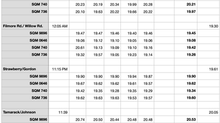All Eyes on Cygnus
- Chuck Bueter
- Jul 17, 2018
- 3 min read
In August and September, the constellation Cygnus is the featured pattern for sky surveys. To quantify the night sky above the New Carlisle Economic Development Area, we want to determine the limiting magnitude of visible stars, both objectively with meters and subjectively with visual estimates. For the latter, you will select the one of eight star charts made by Globe at Night of the constellation Cygnus that most closely matches the sky you see above each respective observing site. You will enter that chart's whole magnitude number on the Globe at Night website.
While You're Looking, Check Out The Planets
The visible planets offer a lovely side show as you're observing the night sky this summer. From west to east you'll find Venus, Jupiter, Saturn, and Mars. Mars in particular is a dandy this year. Toward the end of July, Mars experiences what astronomers call a perihelic opposition (or perihelic apparition). It’s a cosmic double-header when the planet is both closest to the sun and closest to earth, yielding a stunning red visage in the sky. Unlike most months, now Mars (mag= -2.5) will outshine giant Jupiter (mag= -2.0) nearly two times.
The image depicts the planets and moon along the ecliptic on August 15 at 10 PM EDT. The planet sizes are not to scale; rather, the size suggests the planet's respective brightness.

Use Nearby Hercules As Complementary Technique
The next viewing windows for the Globe at Night campaign are August 2-11 and September 1-10, 2018, using the constellation Cygnus. However, their dates are designed for general public viewing hours. You can expand your observing opportunities if you select observing times that are after astronomical twilight (when the sun is 18 degrees or more below the horizon and is contributing no light to the night sky) and when the moon phase is negligible or the moon is below the horizon.
I hope to make individual star charts for Cygnus soon. In the interim, I have made two star charts that depict the constellation Hercules with limiting magnitudes of 5 and of 6 with the fainter stars labeled. The purpose is to see which of the faintest stars is at the limit of visibility for your eyes. The fainter the star, the higher the magnitude number. The two-digit red numbers are actually the magnitude and fraction of magnitude, with the intervening decimal point not depicted in order for it not to be confused with a plotted star. For example, if the faintest star you can see has a red number 47 next to it, then that star's magnitude is approximately 4.7.
The magnitudes are printed in red so they are deliberately harder to see under a red flashlight compared to the faint printed star points. When you are in the field, simply circle the stars you can see on a printout of the star chart. Hang on tight--that's your observing record. You can later determine which was the faintest visible star.
Stars of Hercules with magnitudes < 5 (decimal points hidden).

Stars of Hercules with magnitudes < 6 (decimal points hidden).

Finding Hercules
Hercules is the constellation depicting the strongman who performed twelve great labors. A keystone of stars anchors the outline, with the star Zeta Her about midway between the bright stars Vega and Arcturus. Between the keystone and Arcturus is the small but distinct constellation Corona the Crown.

This blog post is adapted from https://www.nightwise.org/single-post/2018/04/02/How-Faint-Can-You-See, which focuses on the constellation Leo. Numbered star charts thus far that accompany the Globe at Night star charts include:









































